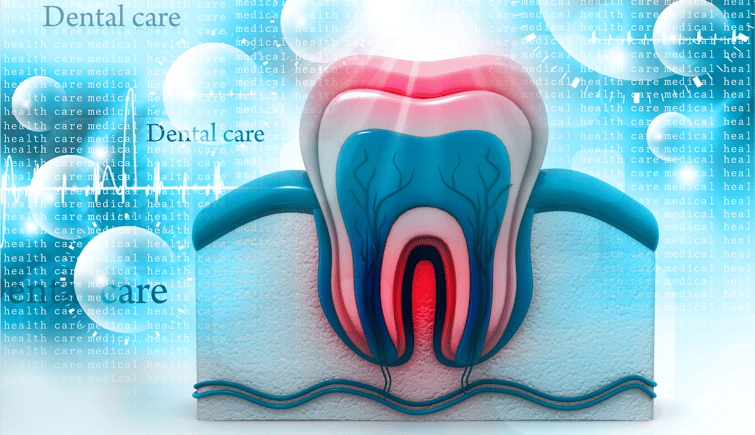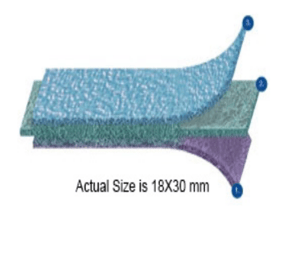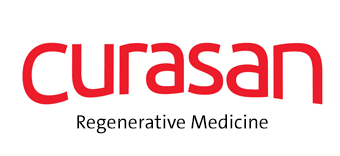
Barrier Membranes
A barrier membrane is a device used in oral surgery and periodontal surgery to assist in the regeneration of bone and periodontal support tissues, through techniques called Guided Tissue Regeneration (GTR) and Guided Bone Regeneration (GBR). GBR is a well-documented and successful technique used by dental surgeons to correct bone deficiencies of the mouth. A resorbable membrane is used to separate a bony defect from overlying soft tissues in order to create an unrestrained space in which new bone growth can occur.
Before the use of resorbable membranes, those first developed were nonresorbable and required a second surgery for membrane removal some weeks later. GBR and grafting techniques began with impractical millipore (paper) filter barriers. Expanded polytetrafluoroethylene (ePTFE) membranes were first used by 1984, being non-resorbable, but compatible with humans and not leading to infection. Although ePTFE is considered the standard for membranes and excellent outcomes have been achieved with this material, they are often contaminated with bacteria limiting the amount of bone regrowth that will occur, and must eventually be removed via at least one extra surgery 4–6 weeks after the tissue has regrown.
The need for this second surgical procedure hindered the utilization of the original barrier membranes, which led to the development of resorbable membranes. When barrier membranes are utilized, the superficial soft tissue flap remains separated from the underlying bone for the primary healing period and must survive on the vascular supply of the flap. It cannot rely on granulation tissue derived from the underlying bone.
Epi-Guide Bioresorbable Barrier Matrix
The Epi-Guide® Bioresorbable Barrier Matrix is a synthetic dental membrane designed for use as an adjunct to periodontal restorative surgeries and assists in the regeneration of bone and periodontal support tissues. Epi-guide is a uniquely structured bioresorbable polyactide (PLA) membrane designed to be used in many applications within guided tissue regeneration (GTR) and guided bone regeneration (GBR) procedures. The membrane helps hold the graft material in place, and also serves as a barrier to keep out unwanted scar producing cells.
The patented barrier matrix is characterized by its unique three-dimensional architecture. The innovative structure is easily recognizable in the cross section: The inner layer, featuring large and closed pores, transforms into a chamber-like structure in the intermediate layer, and then into the highly porous outer layer, also featuring large pores.
The Epi-Guide Barrier is a hydrophilic PTM membrane that quickly absorbs blood fluid and supports healthy clot formation to maintain gingival flap viability and coverage. Should the barrier become exposed or if primary closure is not obtained, clotted blood within the barrier provides a natural matrix which allows tissue to quickly grow and cover most exposures. The Epi-Guide® Barrier is self-supporting and can be used in many situations without support from bone grafting materials.
High-Tech Architecture

Layer 1: Gingival Interface - Numerous voices and intercommunicating pathways enhance fibroblast infiltration and cell attachment.
Layer 2: Inner Surface - Inner labyrinth creates pathways, while internal chambers enable collateral circulation and flow of interstitial fluid in the membrane.
Layer 3: Defect Interface - Optimal porosity supports the uptake of fluid, helps adherence to the tooth surface, and inhibits fibroblast movement.
The structure and integrity of Epi-Guide are maintained for more than six weeks after implantation. Full resorption is completed within six to twelve months. Epi-Guide consists of lactic acid polymers. The polymer structure (D, D-L, L-polylactide) breaks down into carbon dioxide (CO2) and water (H2O) and is completely resorbed.
PLA is an immunologically inactive substance, and PLA polymers have been used for widely divergent therapeutic applications for many years. They have invariably demonstrated their biocompatibility, biological resorption ability, and absence of toxicity.
Visible Healing in Your Patients
- Forms a natural barrier to promote soft-tissue healing.
- Maintains architecture and structural integrity for up to 20 weeks after implantation.
- Complete bioresorption occurs between 6 and 12 months.
- Regenerates tissue despite flap recession or if primary closure is not obtained.
Conclusion
Favorable aspects of Epi-Guide are its ease of handling, ease of contouring, and rapid absorbency of blood from the defect region, important prerequisites for rapid and safe intraoperative membrane placement. Additionally, other positive features are close tissue adaptation and good tissue integration, along with the barrier function of the material, substantially reducing the risk of membrane exposure. With the goal being minimally invasive dental care, the use of resorbable membranes make an additional surgical intervention unnecessary. Another advantage is the fully synthetic nature of the membrane, which makes forensic aspects figure less prominently, and reduces the time needed for patient education. Furthermore, advantages in clinical procedures are particularly evident in combination with a synthetic resorbable bone regeneration material, such as Cerasorb® M.
As an industry leader, curasan is an innovative developer, manufacturer, and marketer of biomaterials for bone and tissue regeneration for the world-wide dental and orthopedic markets, with a focus on delivering these innovative biomaterials to its customers to help their patients and clinical outcomes. They develop, manufacture, and market biomaterials and medical devices in the field of bone and tissue regeneration, wound healing, and osteoarthritis therapy. Learn more about Epi-Guide and how to incorporate it into your business. Take advantage of their easy ordering process and exceptional customer service that makes them stand out among competitors.
